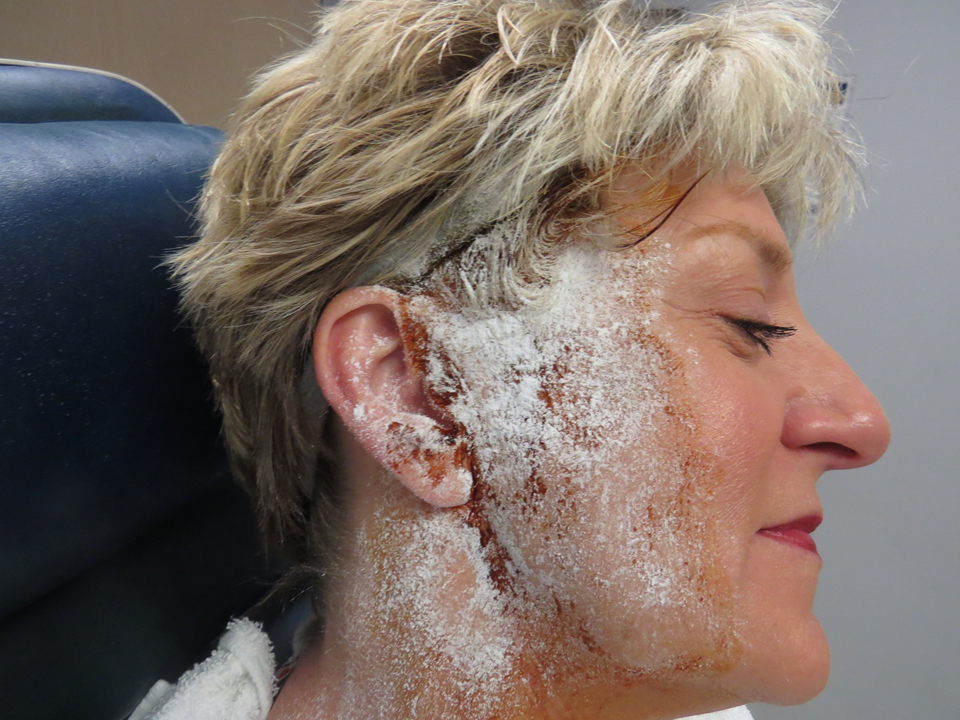Frey syndrome (Baillarger’s syndrome, auriculotemporal syndrome, Dupuy syndrome, gustatory hyperhidrosis) occurs due to aberrant reinnervation following injury to the auriculotemporal nerve, most often following parotidectomy.
Because nerve regeneration takes time, presentation generally occurs 6 to 18 months after surgery.
While not lethal, it can significantly reduce patients’ quality of life.
The published incidence of Frey syndrome after parotidectomy varies from 4% to 96%. The wide range of rates reported in the literature reflects great heterogeneity of symptom severity, reporting, and diagnosis.
The auriculotemporal nerve, a branch of the trigeminal nerve, consists of parasympathetics to the parotid gland and sympathetics to the sweat glands of the face and scalp. If injured, the aberrant regeneration of post-ganglionic parasympathetics (responsible for salivary secretion) along the pre-existing sympathetic pathways to the vessels and sweat glands of the skin leads to the development of Frey syndrome.
Facial warmth, flushing, and sweating in the territory of the auriculotemporal nerve overlying the parotid gland (preauricular skin, temporal skin, scalp, TMJ region).
Symptoms occur during meals, especially with spicy and sour foods.
Frey syndrome is less common in children and may occur during early infancy without a history of trauma or surgery. Symptoms usually occur around 5 months and can be misdiagnosed as food allergies since the Frey syndrome appears during the same period as food diversification. It can be distinguished from allergies: history of instrumented vaginal delivery, quick onset after a meal, occurrence with specific foods (sweet and sour) not related to common food allergens, rapid recovery without treatment, consistent and persistent location, absence of other atopic symptoms.
Approach is preventative, using fat flaps, musculoaponeurotic flaps, acellular dermal matrices, or other methods to provide a barrier between parotid innervation and sweat glands during parotid surgery. Botox has been used successfully in treatment but it requires regular re-administration due to diminishing effect.

